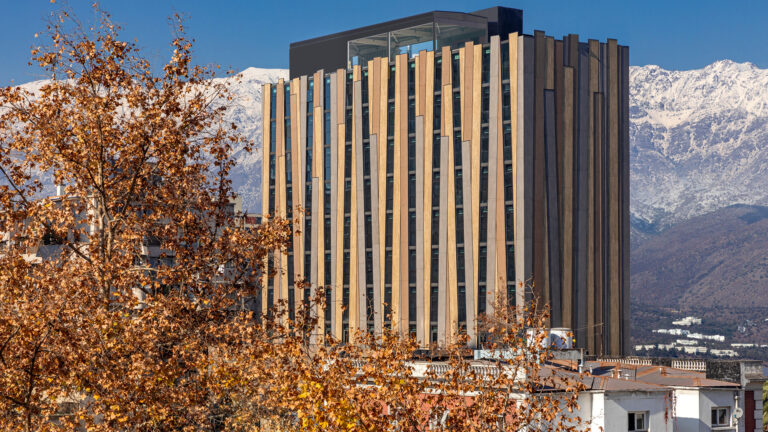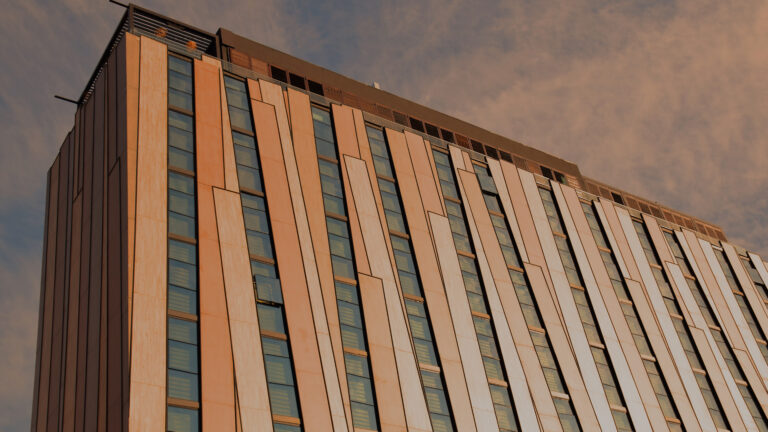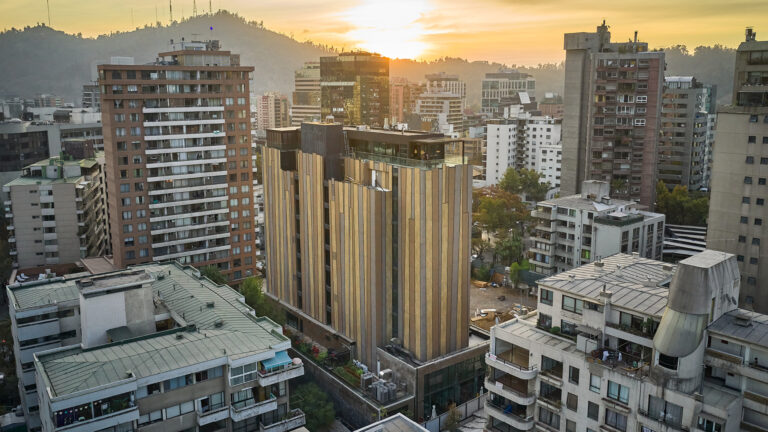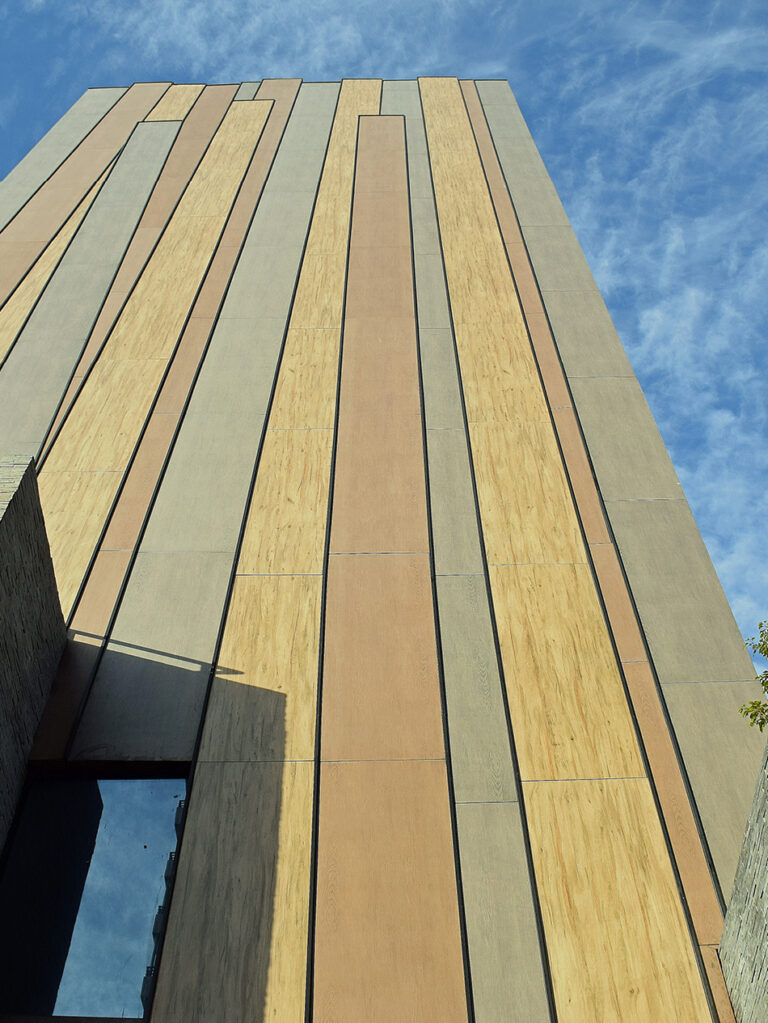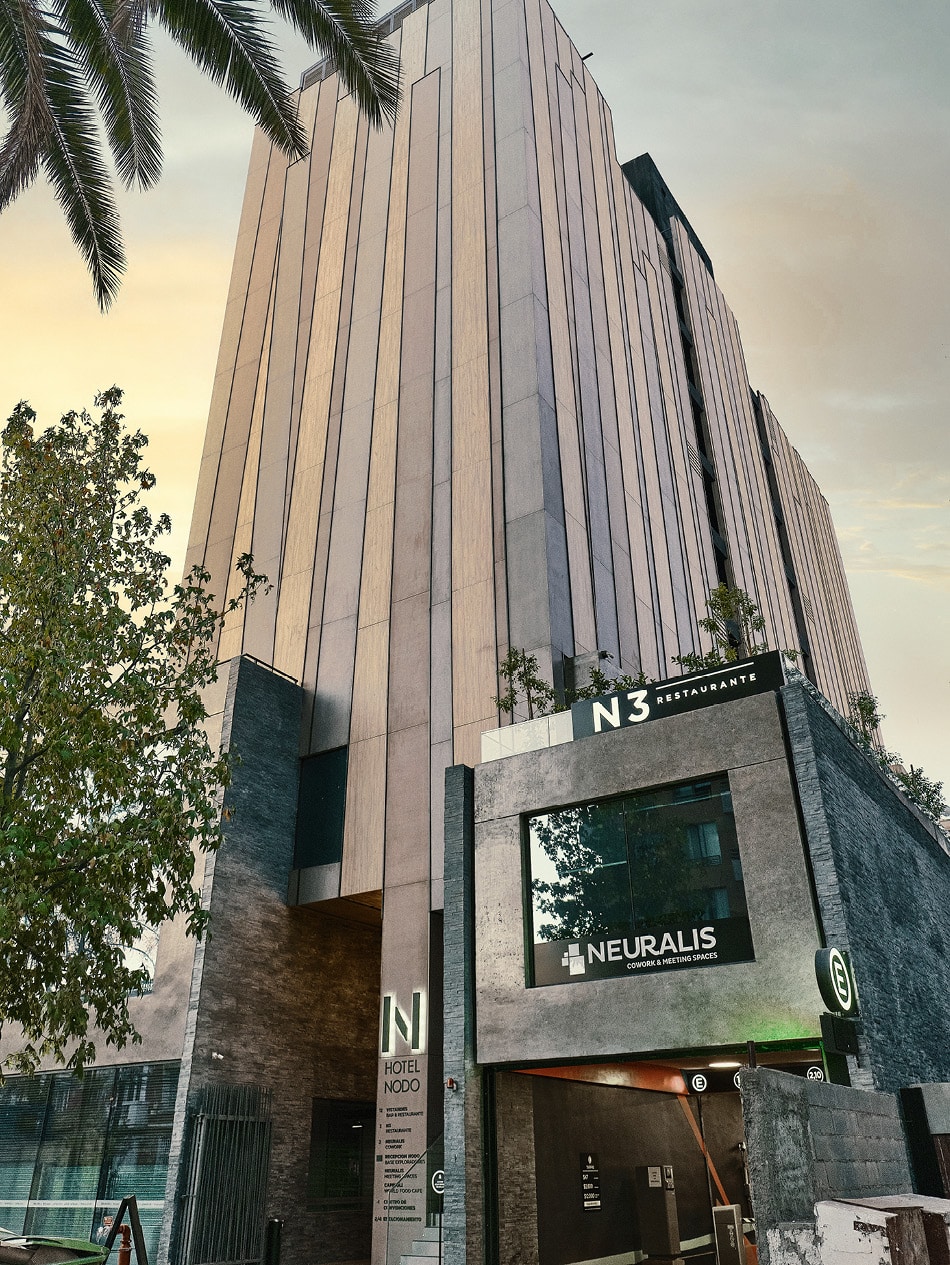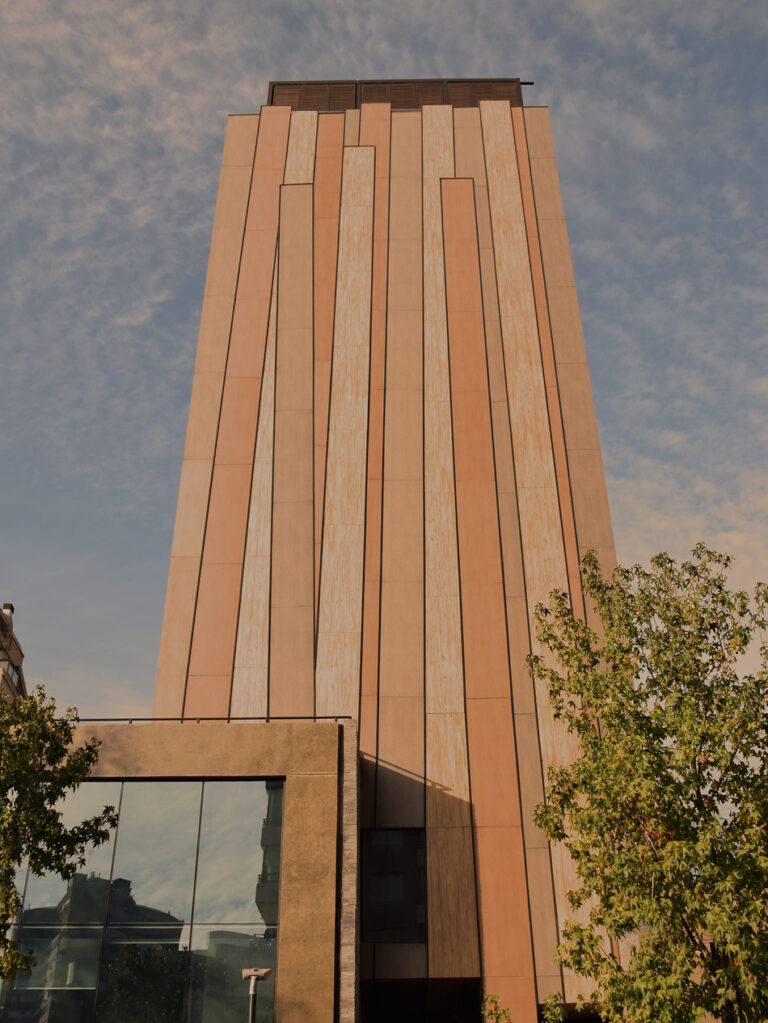1 finish, 3 sizes
Collection Legno Venezia
Hotel Nodo: “naturally urban”. A hotel with façades covered in Laminam bioactive surfaces was the first building to actively combat South America’s (*) pollution in Chile’s capital. Its architect, Ricardo Stein, designed the hotel to create a building that could not only iconographically reproduce a forest inside a city (just like a landscape), but could function like a forest and purify the air – like an artificial living organism.
Laminam was the first to make this possible. The company supplied the cladding surfaces for the Hotel Nodo in Santiago, Chile making it South America’s (*) first bioactive building. The Italian company’s products treated with bioactive technology were selected by Chilean architect Ricardo Stein, who is specialised in eco-sustainable buildings, for his project. He wanted an architectural element that could aesthetically evoke nature in an artificial area while actively fighting pollution.
Stein explained, “Chile is presented to other countries as a land of landscapes. The Hotel Nodo attempts to iconographically represent landscapes as an element of differentiation, and satisfy the search for unique new experiences for people who temporarily live in a hotel. At the same time, the hotel was built with the intention of artificially reproducing nature and not only for aesthetic reasons. The goal was to create a structure associated with the idea of being a living organism.” To reach his goal, Stein did not choose a design solution that involved natural materials (stone and wood) or the creation of architectural spaces where trees could grow, like Stefano Boeri’s famous “Bosco Verticale” in Milan. Stein opted for a conceptual solution instead.
Nature is read aesthetically and iconographically,” explained Stein, “with a stone base on which a wooden vertical body grows with a regular-irregular order, as if it were a forest.” However, following the project’s ideal premise, he used concrete for the base and a pillar, beams, and reinforced concrete slab system for the vertical structure. This allowed “maximum flexibility of use, which is essential in multifunctional buildings”. These façades are covered in Laminam’s bioactive ceramic slabs. Stein explained his choice in this way: “We were looking for surfaces that made us think of wood, particularly forest tree trunks to represent the natural element. We needed something that could help fight pollution by acting as an authentic green space. This meant purifying the air like real trees. We realised that the surfaces produced by Laminam could meet image and function purposes.”
You are applying for the position of
You are sending a spontaneous application
